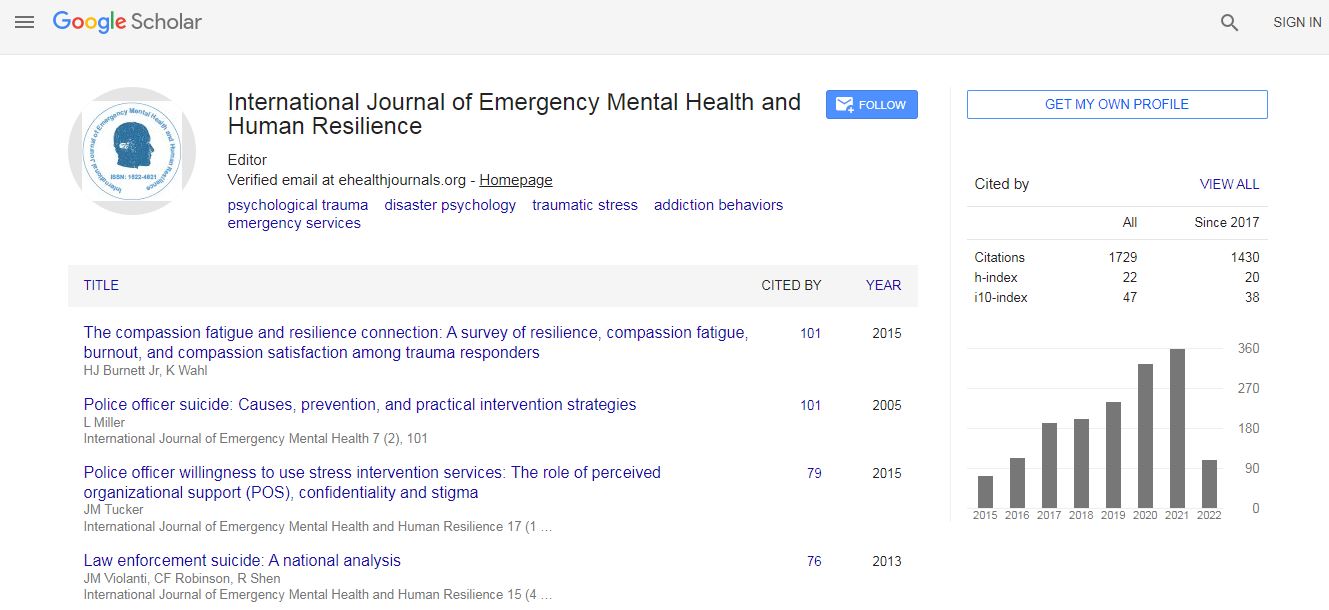Our Group organises 3000+ Global Conferenceseries Events every year across USA, Europe & Asia with support from 1000 more scientific Societies and Publishes 700+ Open Access Journals which contains over 50000 eminent personalities, reputed scientists as editorial board members.
Open Access Journals gaining more Readers and Citations
700 Journals and 15,000,000 Readers Each Journal is getting 25,000+ Readers
Google Scholar citation report
Citations : 4948
Indexed In
- Index Copernicus
- Google Scholar
- CiteFactor
- Publons
- Pubmed
- science Gate
- scispace
- world cat
Useful Links
Related Subjects
Share This Page
The bleaching syndrome: Mental health diseases and women of color
3rd International Conference on Mental Health and Human Resilience
Ronald E Hall
Michigan State University, USA
Posters & Accepted Abstracts: Int J Emerg Ment Health
Abstract
Influenced by Western culture women of color have internalized a pathological appreciation for light skin. Travelers to Asia, India, Africa and the Americas will be struck by the various skin bleaching applications utilized by the women there in their efforts to acquire light skin vis-√?¬†-vis the bleaching syndrome. The bleaching syndrome is a social disease invisible to the casual observer but is immune to dispute in the aftermath of bleached skin as the universally preferred skin color ideal. According to Webster√ʬ?¬?s Dictionary bleach is a verb that means to remove color and in the case of the Bleaching Syndrome to make one otherwise white. A syndrome consists of a grouping of symptoms i.e., behaviors that occur in conjunction and make up a recognizable pattern. These literal definitions provide a context for the bleaching syndrome which contains three basic components. They consist of the following: (1) psychological according to internalized ideals; (2) sociological according to reactions to those ideals; and (3) physiological according to the bleached ideals manifested via bleach creams. The mental health implications of western skin color ideals are universal and extend to the norms of the total non-European population. Without exception, Eurocentric skin color ideals are an environmental force that impairs the mental health of women of color resulting in a predisposition to disease i.e., bleaching syndrome. Al√?¬¨though the literature acknowledges racism among the list of social pathologies, amidst idealization of light skin the neglect of the bleaching syndrome has been all but institutionalized. Greater focus on skin color would enhance the ability of human service professionals to alleviate social pathogens that accommodate the bleaching syndrome and serve the mental health interests of their clients, in-toto.Biography
Email: hallr@msu.edu

 Spanish
Spanish  Chinese
Chinese  Russian
Russian  German
German  French
French  Japanese
Japanese  Portuguese
Portuguese  Hindi
Hindi 